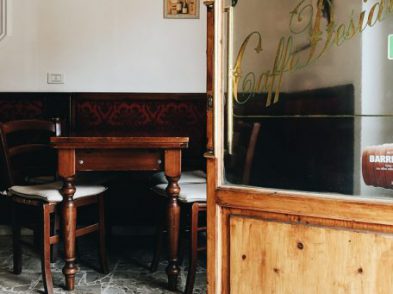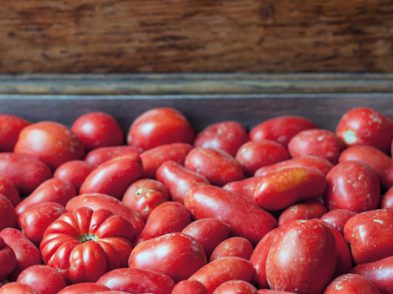Pliny the Elder praised it and Lorenzo the Magnificent was fond of it: pecorino di Pienza is a cheese that for centuries has embodied the taste of the land and the traditions of one of Tuscany?s most beautiful valleys, the Val d?Orcia.
Pecorino di Pienza is a Tuscan pecorino, one of the world?s oldest cheeses, as its makers like to boast. Made from 100 percent ewe?s milk, pecorino naturally gets its name from the Italian word for sheep, pecora. Pure sheep?s milk cheese counts for over 40 percent of all cheese produced in Italy, and it is produced particularly in the centre-south, where the climates and landscapes have formed shepherding traditions as old as the villages.
Pecorino Toscano is a milder, sweeter and softer cheese than its southern cousins, pecorino Romano, Sardo or Siciliano. It?s a fairly firm, pale cheese with a buttery, nutty character. When it?s fresco (matured at least 40 days but not more than two months), it?s a creamy and mild ivory-coloured cheese. When stagionato, or aged a minimum of four months, it becomes chalkier, crumblier in texture and richer, but not piquant like the other pecorini.
Pecorino di Pienza is one of the most prized of all Tuscan cheeses. Pienza, the ?ideal? Renaissance hilltop town of Pope Pius II, is nestled between the winemaking towns of Montalcino and Montepulciano in the Val d?Orcia. It?s a strikingly arid, unforgettable landscape―not the lush rolling hills of other parts of Tuscany, but a rather dry, rippling clay earth, dotted here and there with farmhouses and rows of cypress trees.
With land famously difficult to cultivate, farmers survived on their cheeses produced from the milk of sheep, which could graze on the local grass and wild herbs. This characteristic landscape has barely changed over the centuries, but many of the traditions surrounding the methods of cheese making have.
While pecorino di Pienza, like pecorino Toscano DOP, is usually made with animal rennet today, there was once a very traditional method of making pecorino di Pienza using a vegetable rennet known as presura in Valdorcian dialect―a wild cardoon or artichoke with a purple thistle-like top that grows sporadically all over the surrounding valleys (today sadly less than it used to). The spiky thistle is picked in full bloom, air dried and then infused like a tea to use for cheese making, resulting in a slightly more bitter cheese than what is generally produced now. A handful of cheese makers may still make it or experiment with it, but a vegetarian pecorino is tough to find these days.
Another changed factor is a vital one: the sheep are different. In the twentieth century, Sardinian shepherds made their way to Tuscany with their sheep, the Sardo breed, which have since taken over the local population of sheep. Smaller but hardier than the native Tuscan sheep, the Sardo breed are also better milk-producers. The Sardinians who have stayed now make much of Tuscany?s pecorino, bringing their own traditions into the mix and further changing pecorino di Pienza. These factors were what once gave this cheese its stamp of uniqueness and character.
Shifting through piles of pecorino di Pienza that you can find lining touristy shop windows in popular Tuscan towns, you?ll find that most of today?s pecorino di Pienza is now a shadow of its former self, as its tourist-driven popularity has turned it into a factory product available year round rather than the seasonal, unique cheese that Tuscan grandmothers in the area may remember. Imported milk takes away the unique character that the local grasses and sheep of this valley once added; importation and factory standards mean the milk is usually pasteurised, zapping it of bacteria and, as the argument goes, the flavour.
But there are a few artisan cheese makers who still strive to make it what it once was: a unique cheese that bears the full character of the land where it was made.
The organic farm of Podere Il Casale is one such place. Run by Swiss native Ulisse Brandli, who transplanted himself to Pienza 20 years ago, traditional cheese making is the focus of the family-run farm. With a herd of 150 Sardinian sheep and about 25 goats, they are passionate about making cheese the way it has been made in the area for centuries.
Natural, traditional cheese making is at the mercy of nature―the product itself has a life cycle that follows the cycle of the animal. Ulisse?s pecorino production reaches its height around April to May. ?The sheep need fresh grass to produce delicious, aromatic milk,? he says. As the grass is best in spring, his sheep give birth in November, making the most out of their milking period throughout spring and summer, until the beginning of September. ?From October to Christmas we don?t produce pecorino fresco and by spring you?ll no longer find [our] pecorino stagionato,? he added. At other times of the year, the farm adjusts itself by also making goats? cheese.
The local diet of the sheep affects the flavour and quantity of milk, when and for how long it is produced and in the end, the richness and quality of the cheese. The entire farm is certified organic, including the animals? feed, which includes the grass and, when there isn?t enough of that, the farm?s hay, buckwheat, barley and fava beans. The farm animals are also treated only with homeopathic remedies, keeping the milk free of any antibiotics or pharmaceuticals.
The freshness and quality of this milk is something Ulisse prides himself on. ?Working the raw milk with low enough temperatures we are able to salvage the aroma of the milk and thus also the [flavour] all the way to the [finished] cheese,? he says.
Fresh, raw milk is gathered from the animals in the barn and moved just 20 metres or so to the caseificio, the dairy, ready for cheese making, all in the same morning. After the curds get moved into forms, drained and left to continue its transformation, the cheese eventually makes it to brining and then to the cheese pantry―two refrigerated rooms of carefully controlled temperature and humidity. The rounds of pecorino are left to mature depending on whether they are destined to be fresco or stagionato. There is also a pecorino semi-stagionato (aged between two and four months), and endless varieties that include imparting natural flavour to the rind, or sometimes to the cheese itself.
Back on the patio of the farm comes the real measure of what this is all about: the tasting. Cheese rounds are sliced open and served for lunch with the morning?s fresh ricotta (made from the leftover whey), some freshly baked spelt bread, fruit jams and chutneys, the farm?s own honey and jugs of wine. Then there?s the stunning backdrop of the Val d?Orcia, seeped in its characteristically earthy colours, with Pienza winking from the next hill. No doubt this is as close as you can get to experiencing how Pecorino di Pienza is meant to taste: with the creamy, full, slightly sweet taste of the fresh pecorino, the perfume of the rustic, wild herbs and the colour of the dry valley all competing for attention.
Tips for storing pecorino:
Store it in a cellar together with the wine (temperature less than 15 degrees Celsius and humidity of 80 percent), wrapped in a damp cotton cloth. Failing that, in the fridge wrapped first in greaseproof paper then in plastic wrap.
If it is an aged pecorino and some of the mould from the rind makes it way to the rest of the cheese, just scrape it off with the blunt side of a butter knife. It?s still good!
Tips for eating pecorino:
Unlike the Italians of many northern regions, Tuscans don?t mess much with their cheese: it?s not often used as an ingredient in dishes but rather is enjoyed on its own, perhaps with a bit of local honey (such as Tuscan chestnut honey), some pear or in the right season, raw fava beans and cured meats as an antipasto or with Tuscan wine.
When tasting cheese, always start with your eyes, like wine, then your nose and finally your mouth. Taste from the youngest cheese to the most mature or stronger in flavour.
Pecorino fresco is mild and soft, ideal for use on cheese platters. Eat it on its own, drizzled with bright green extra virgin olive oil (Tuscan of course) or accompanied with raw fava beans and prosciutto as part of a traditional, simple antipasto.
Pecorino stagionato is ideal for grating on pasta or risotto dishes in place of Parmesan cheese or serve it in thin slices with prosciutto or other cured meats.
Pecorino di Pienza: try it drizzled with chestnut honey (or a medium-dark honey) and paired with a young glass of Rosso di Montalcino.
[Parts of this article, published in print on June 7, 2012, were corrected and revised online on July 4, 2012.]








